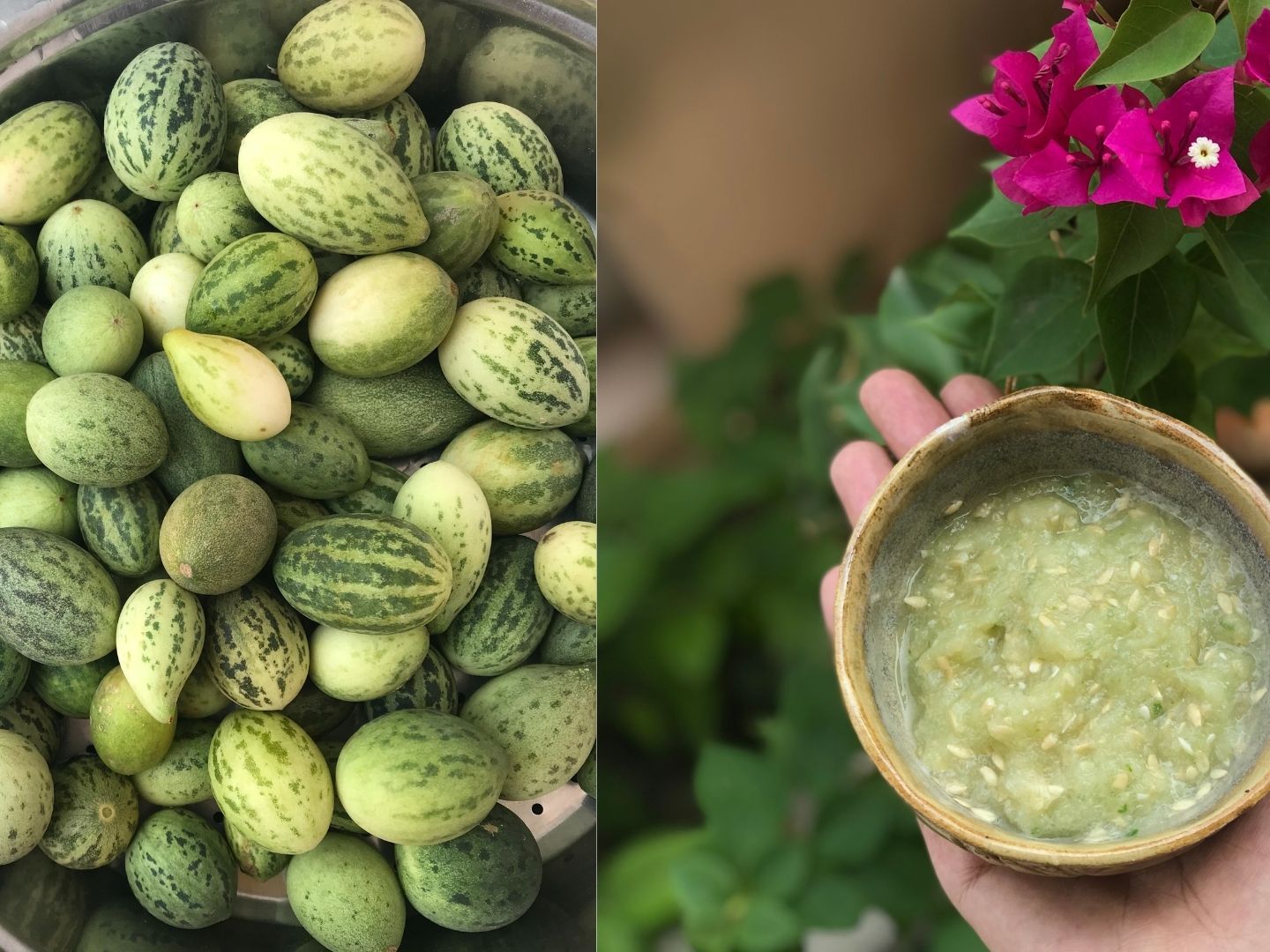 Image Source: Condé Nast Traveller India
Image Source: Condé Nast Traveller India
A small, wild fruit resembling a mini watermelon is creating a storm as the secret ingredient behind Rajasthan's most popular dishes. Called kachri (Cucumis callosus), this desert cucumber is not only an unusual oddity-it's a culinary dynamo that has driven the distinct taste of Rajasthani cuisine for centuries.
In the dry heartland of Rajasthan, where the sun pounds down and water is a precious commodity, a small fruit known as kachri flourishes against all expectations. Easily confused with a small watermelon, kachri is a regular in desert cuisine, valued for its sour taste, nutritional kick, and versatile uses. With the world focusing on local, sustainable food, kachri is a testament to the resourcefulness of Rajasthan and its food culture.
What is Kachri?
-
Kachri is a wild desert fruit that grows in the Thar Desert, also referred to as Cucumis callosus.
-
It is very much like a small watermelon, being rounded in shape and occasionally striped or mottled on the surface, but featuring a yellowish-brown rind when ripe.
-
The flavor is a wonderful combination of tart, sweet, and refreshing flavors, including melon and cucumber hints-very different from its bitter relative, tumba.
Culinary Uses
-
Raw: Sliced and consumed as a snack, added to salads, or as a crunchy garnish.
-
Powdered: Dehydrated and powdered into a spice, kachri powder brings an added zing to traditional fare such as ker sangri and gatte ki sabzi.
-
Pickled: Kachri ka achar is a sour, pungent pickle that extends the shelf life of the fruit for months.
-
Meat Tenderiser: Kachri powder is a natural tenderiser, traditionally used to soften harder cuts of meat in curries.
Why is Kachri Special for Rajasthan?
-
Tolerates desert climate with little care and water, which suits Rajasthan's extreme climate.
-
Offers much-needed hydration and nutrition during hot summer months when other fresh fruits and veggies are in short supply.
-
Its ability to resist drought aids in sustainable farming in the area.
Nutritional Benefits
Packed with vitamin C and other nutrients, kachri is cherished for its hydrating and health-improving qualities.
Proves to be an essential source of sustenance for desert villages, particularly during times of shortages.
Wilder to Cultivated
-
Once gathered traditionally from the wild, kachri is presently being cultivated on a small level by farmers around Jodhpur and Bikaner.
-
Purchased fresh at local markets between July and September, and in powdered or dried form throughout the year.
Cultural Heritage
Generations old, kachri is an integral part of the fabric of Rajasthani cooking traditions.
While global interest in local, sustainable food is increasing, kachri is making waves outside Rajasthan as well.
Sources: The Better India, Times Now News, EBNW
Advertisement
Advertisement






